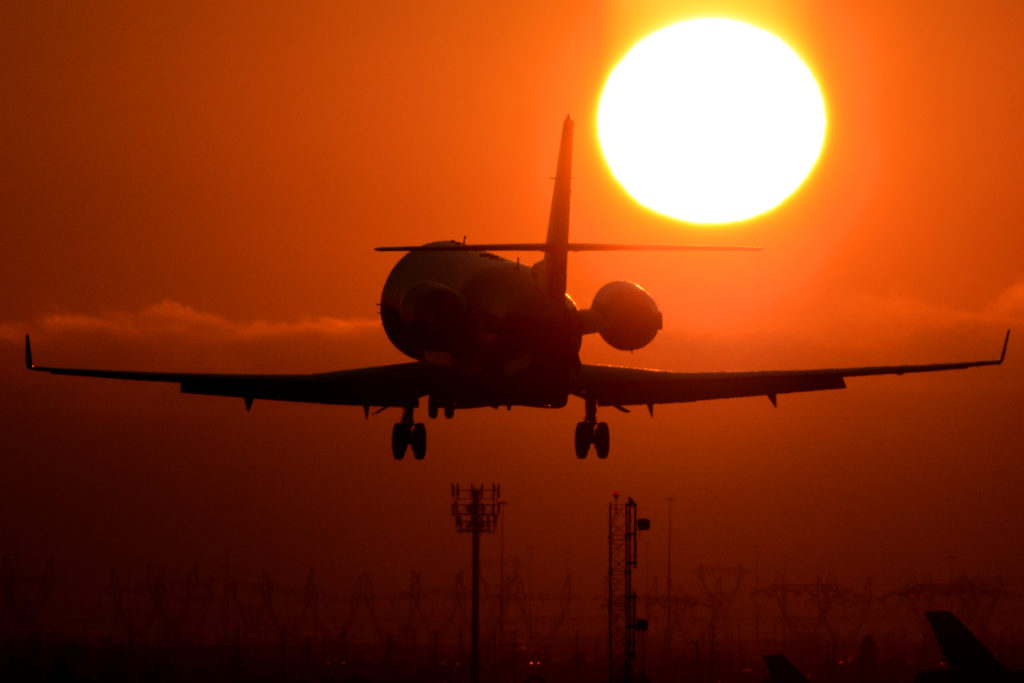Estimated reading time 5 minutes, 1 seconds.
In the world of business aviation, Dec. 25 — Christmas Day — is almost always the day that sees the least amount of flight activity on an annual basis. Unsurprisingly, as most people stay home to celebrate with their families or enjoy time off work, very few business-related flights are chartered.

That was the case on Dec. 25, 2019, which saw a little over 3,000 bizav flights operate while most people enjoyed rich foods and gift giving among family and friends. In comparison to the rest of the year, which saw a daily average of 8,535 flights, it’s clear that Christmas represented a major dip in activity.
In 2020, as the world of aviation has been crippled by COVID-19, business aviation has already experienced 39 days worse than Dec. 25, 2019 in terms of flight activity — that’s the bad news.
The good news? Only three of those days have come in the month of May — with the worst of it happening at the end of March and throughout April.
“The numbers are trending better, it’s an indication that we’re moving forward from where we’ve come from,” said Travis Kuhn, vice-president of Market Intelligence for ARGUS International, during a webinar hosted by the company on May 21. Moderated by Kuhn and Anthony Brancaccio, ARGUS’s operations and customer success manager with the company’s International Market Intelligence division, the webinar, titled Grounded: COVID-19’s Continued Impact on Business Aviation Flight Activity, outlined the massive drop-off in activity the bizav community experienced in March and April as a response to the pandemic.
It also inspired some hope for attendees, as Kuhn made it clear that May is tracking far better than the previous months.
When the COVID-19 crisis unfolded, and governments issued social distancing and stay home orders, business aviation saw its activity drop 37 per cent in the weeks following March 15 — what Kuhn called the “turning point.” In total, the month saw a 31.7 per cent decrease in flights compared to March 2019.
The numbers in April were even worse, as the bizav community recorded an activity drop of 71.5 per cent from the same month a year ago. Compared to the previous high set by business aviation flight activity in October 2019, activity in April declined by 73.1 per cent.
“Hopefully, April will go down as the darkest month in aviation, and hopefully we never see anything else like it,” Kuhn said.
While May 2020 is tracking to have a 44 per cent decrease in activity when compared to May 2019, business aviation overall is moving toward a 103 per cent increase in monthly activity from April — in other words, May will most likely double the amount of movements seen a month prior.
“That’s good news, because it means we made up a third of our losses in one month,” Kuhn explained.
In a slide showcasing the first 10 days of April in contrast to the first 10 days of May 2020, the lowest day from May 1 to May 10 was better than the best day over the same course in April.
“This will be the first ever triple digit month-over-month (MOM) increase, and hopefully the last,” said Kuhn. “Both business aviation and commercial aviation hit their absolute bottom, but both have begun to slowly recover.”
Just last week, business aviation saw over 5,000 departures on a single day for the first time since the beginning of March.
Past that and into June, the numbers start to look even better. While still an unavoidable decrease from 2019, the month is projected to decline only 23 per cent from the same period a year ago. And in a graph showcasing business aviation’s flight numbers on a monthly basis from 2017 to 2020, the forecast showed June’s activity levels reaching those similar to the end of February 2020.
Beyond that, it’s tough to forecast how the market will change, according to Kuhn, although he does believe business aviation has a faster track to recovery than the commercial sector.
“We believe business aviation will recover better,” he said. “Because more people will seek out chartered, private aircraft rather than a commercial airliner.” For aviation as a whole, Kuhn said it will depend on the world economy’s financial standing after the dust settles from the current crisis.
While the situation is still stark, it appears the first steps towards recovery for business aviation have begun.








